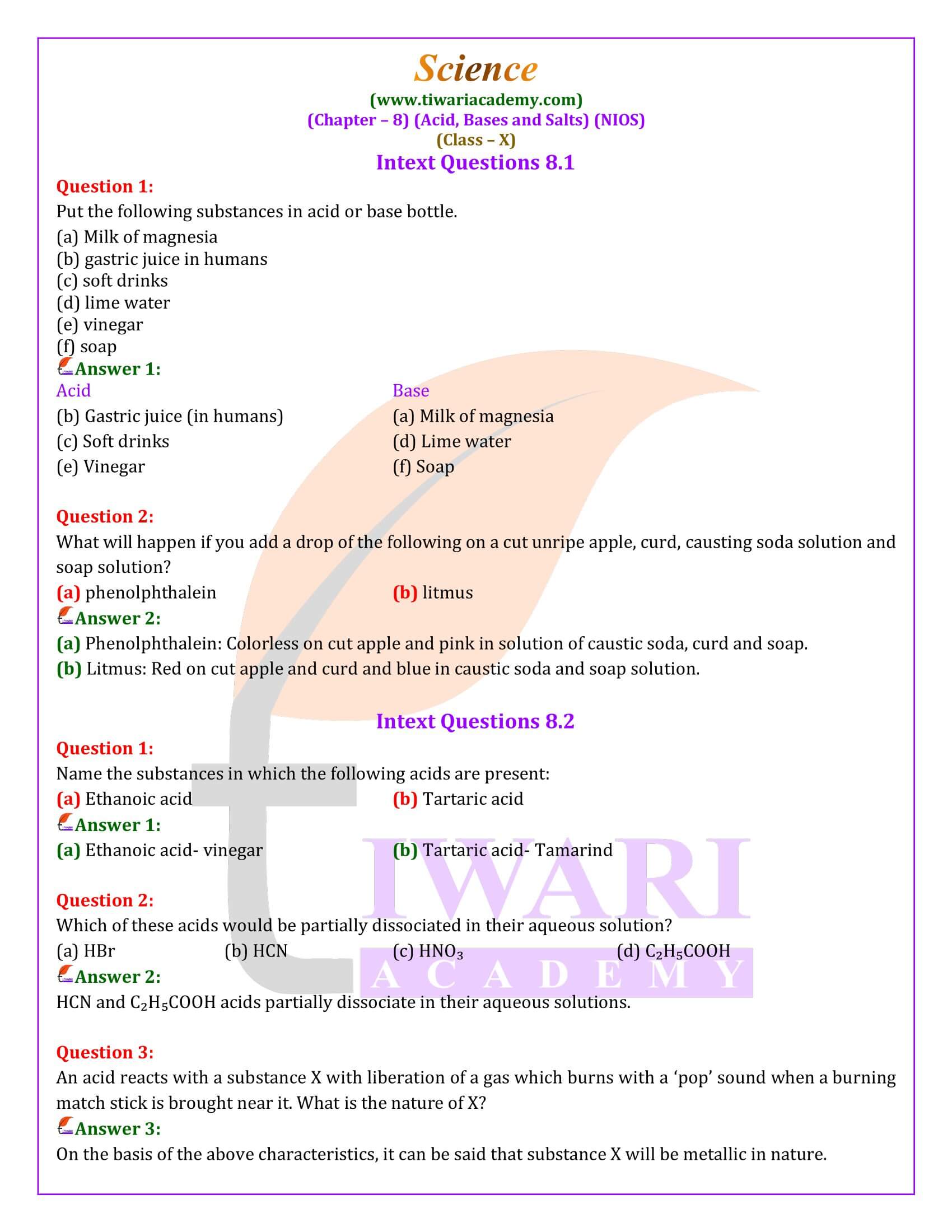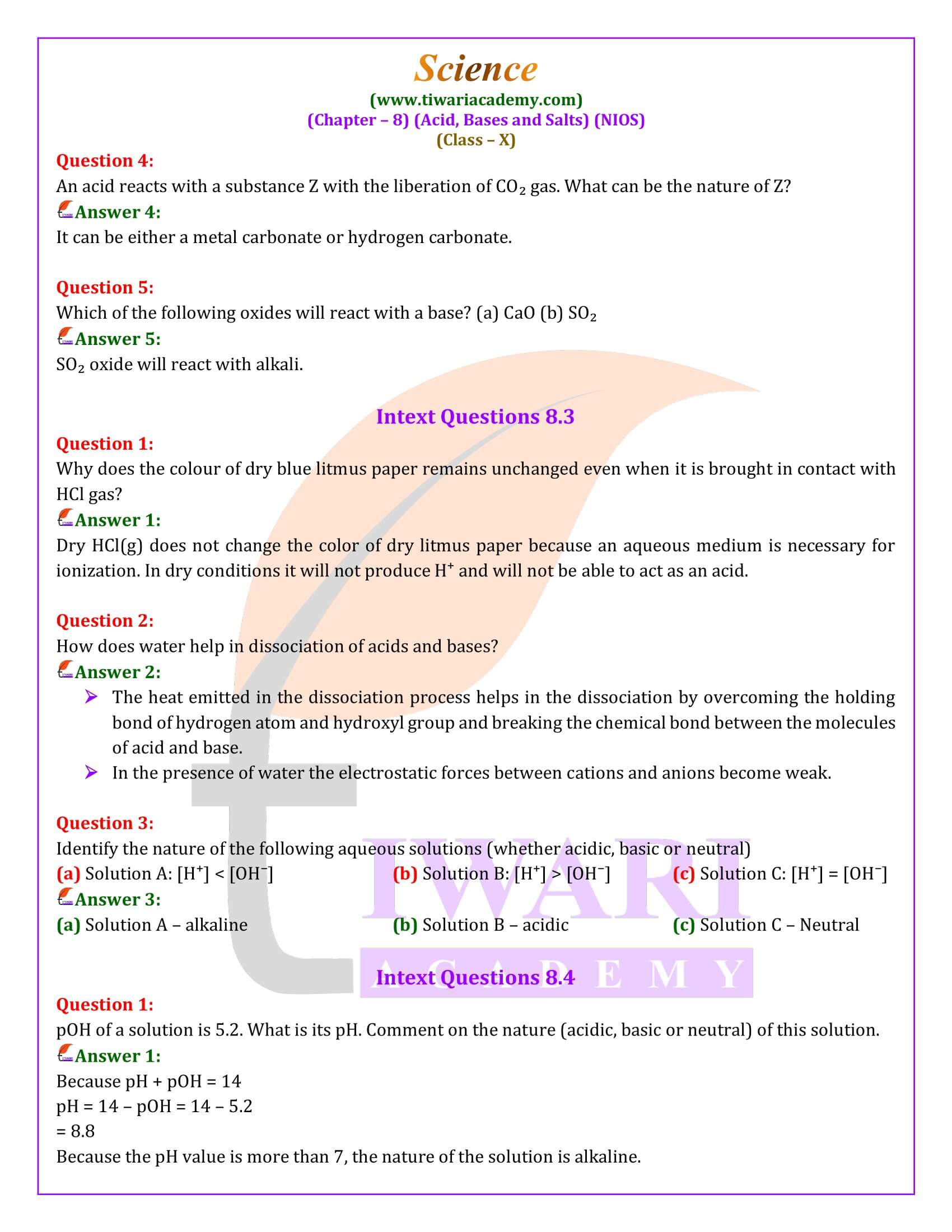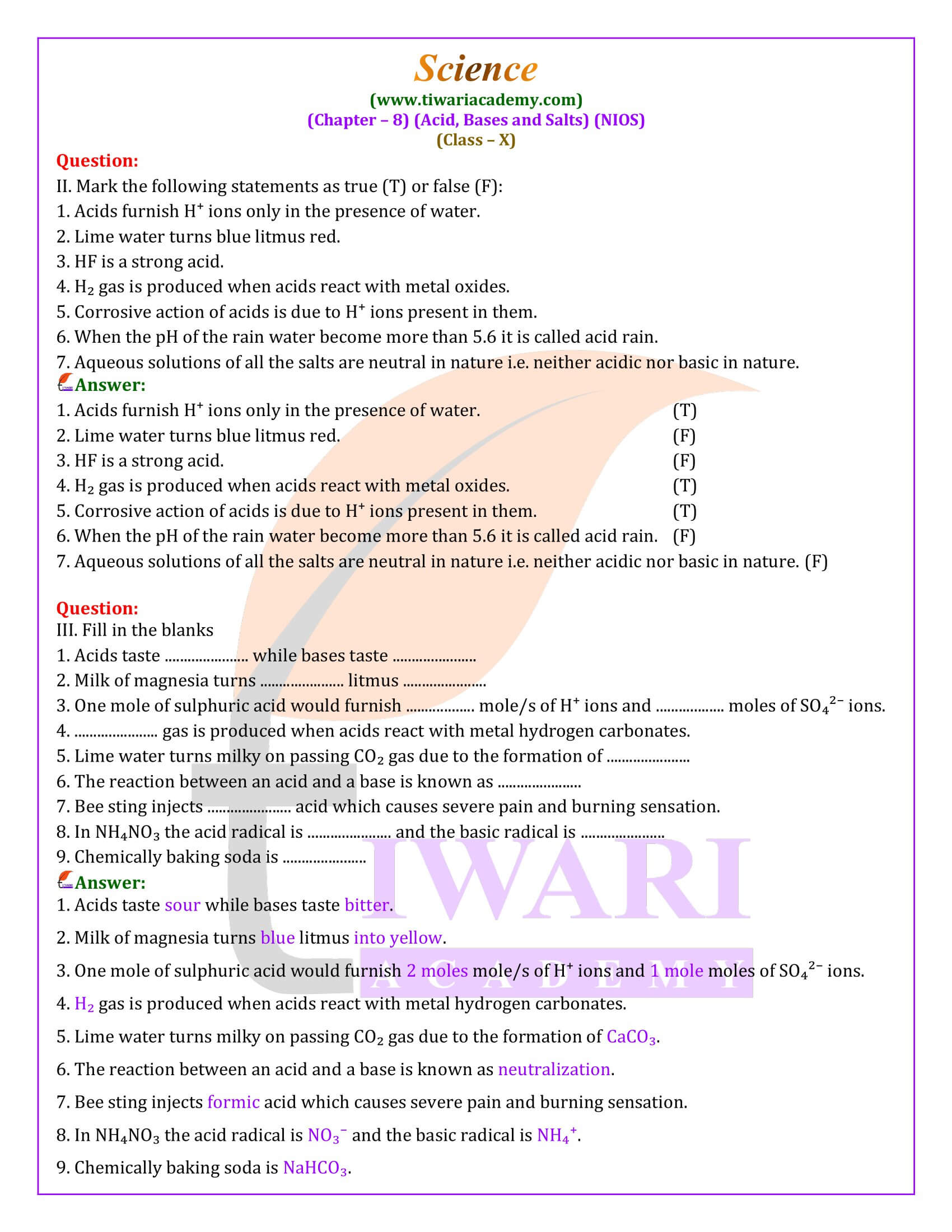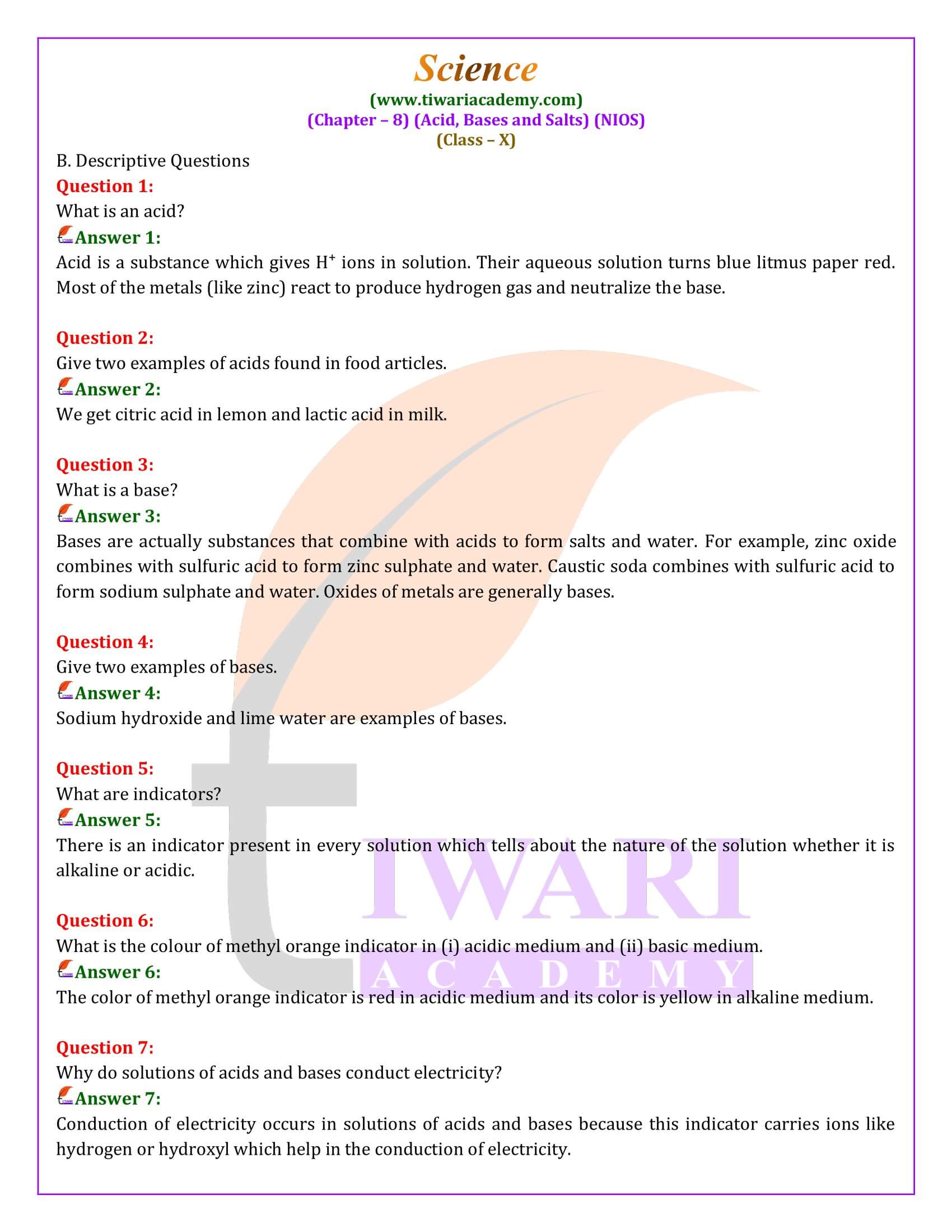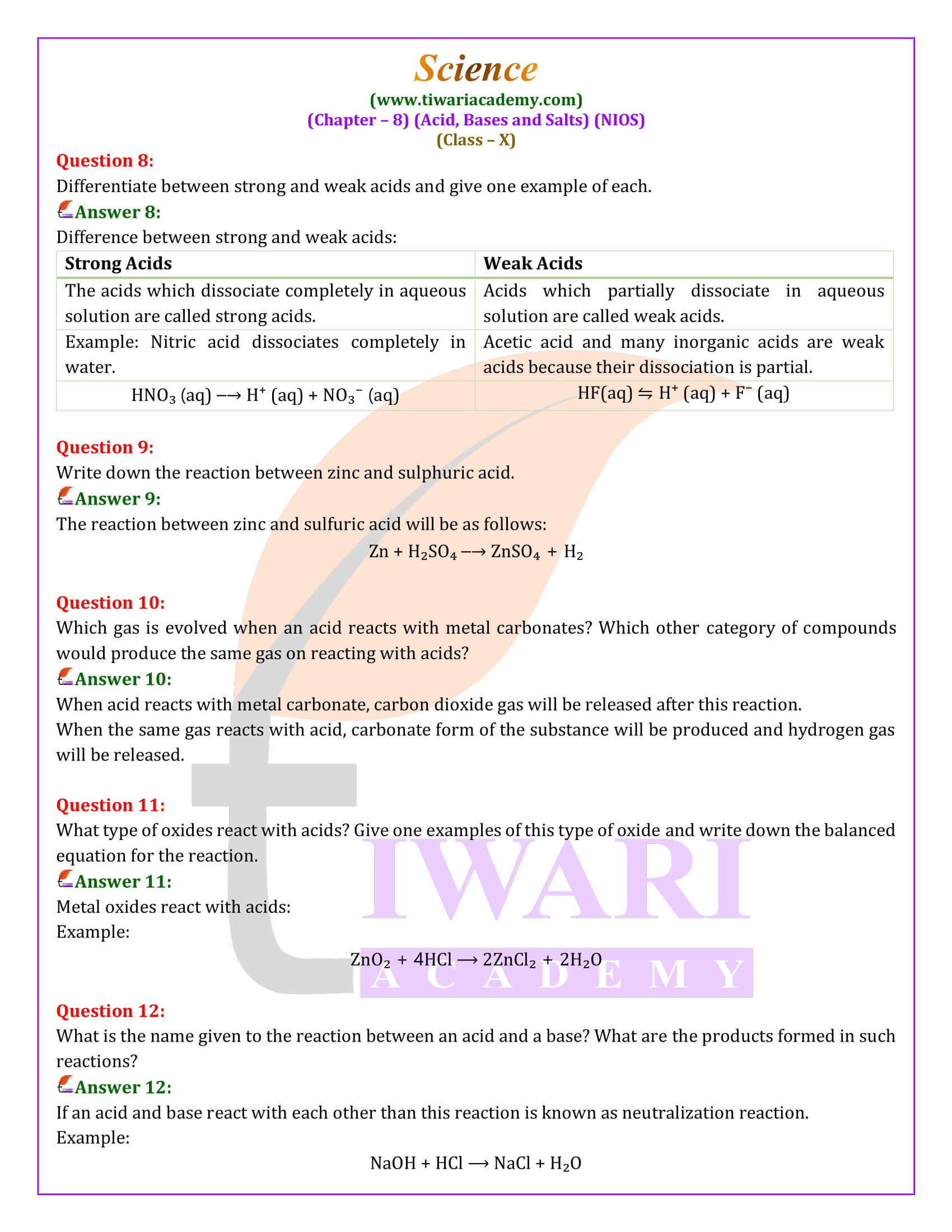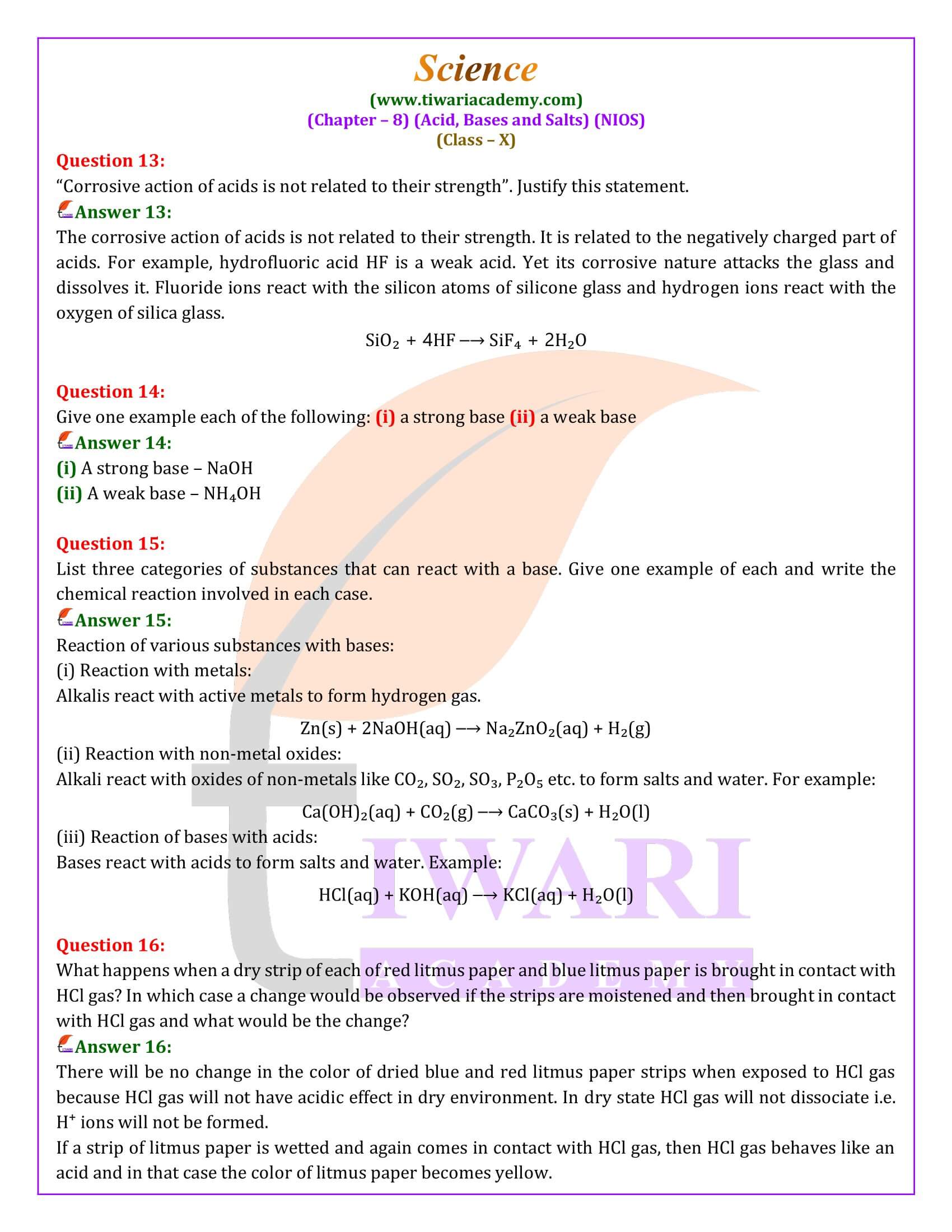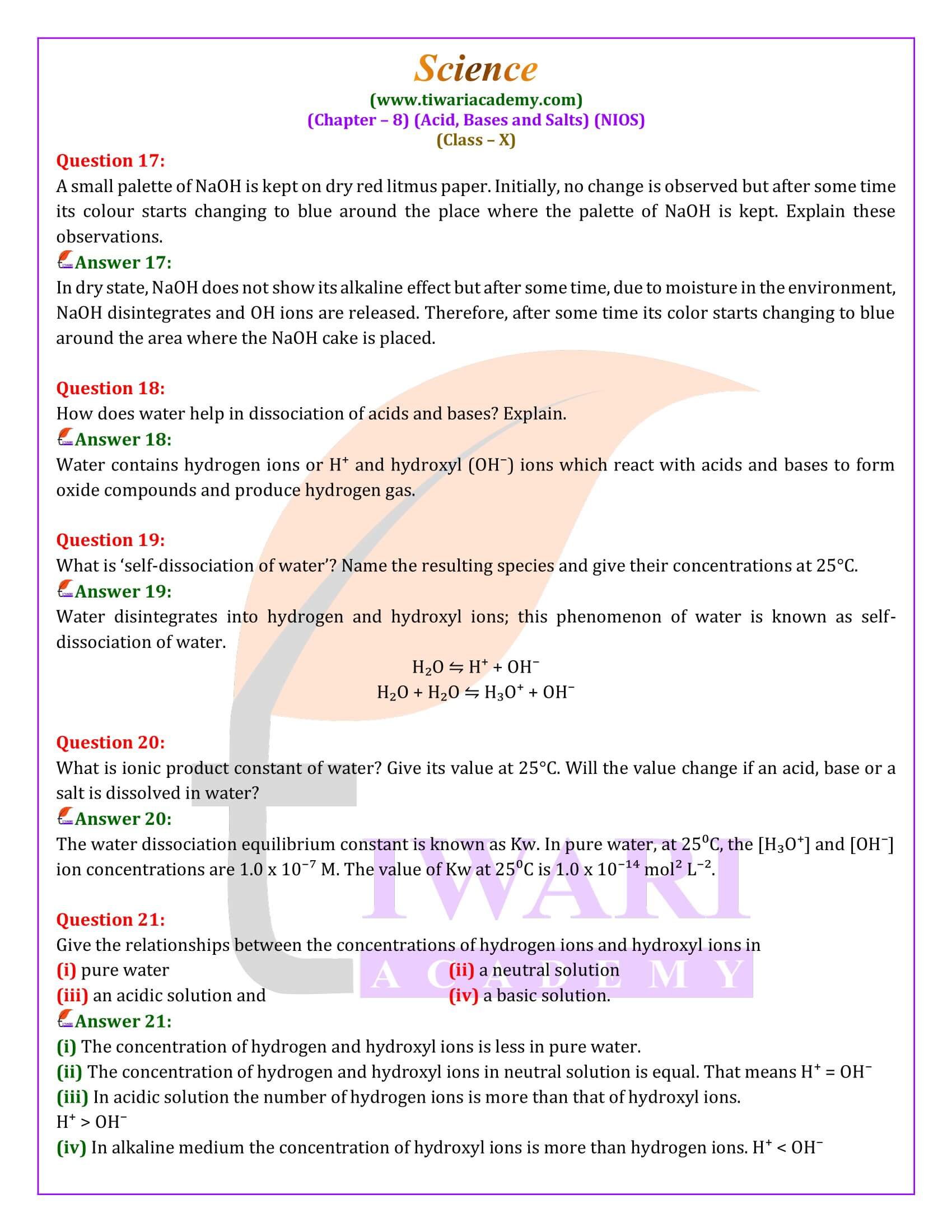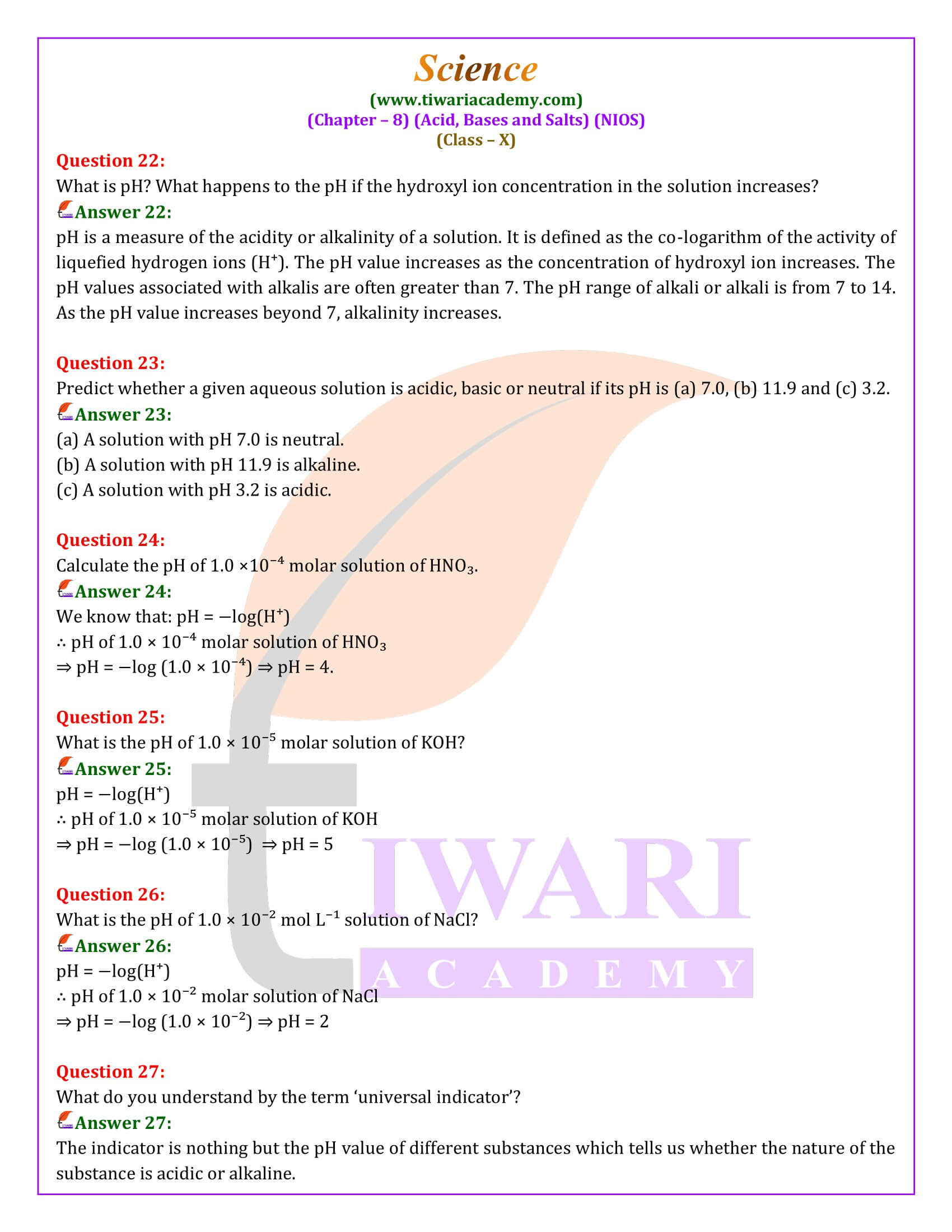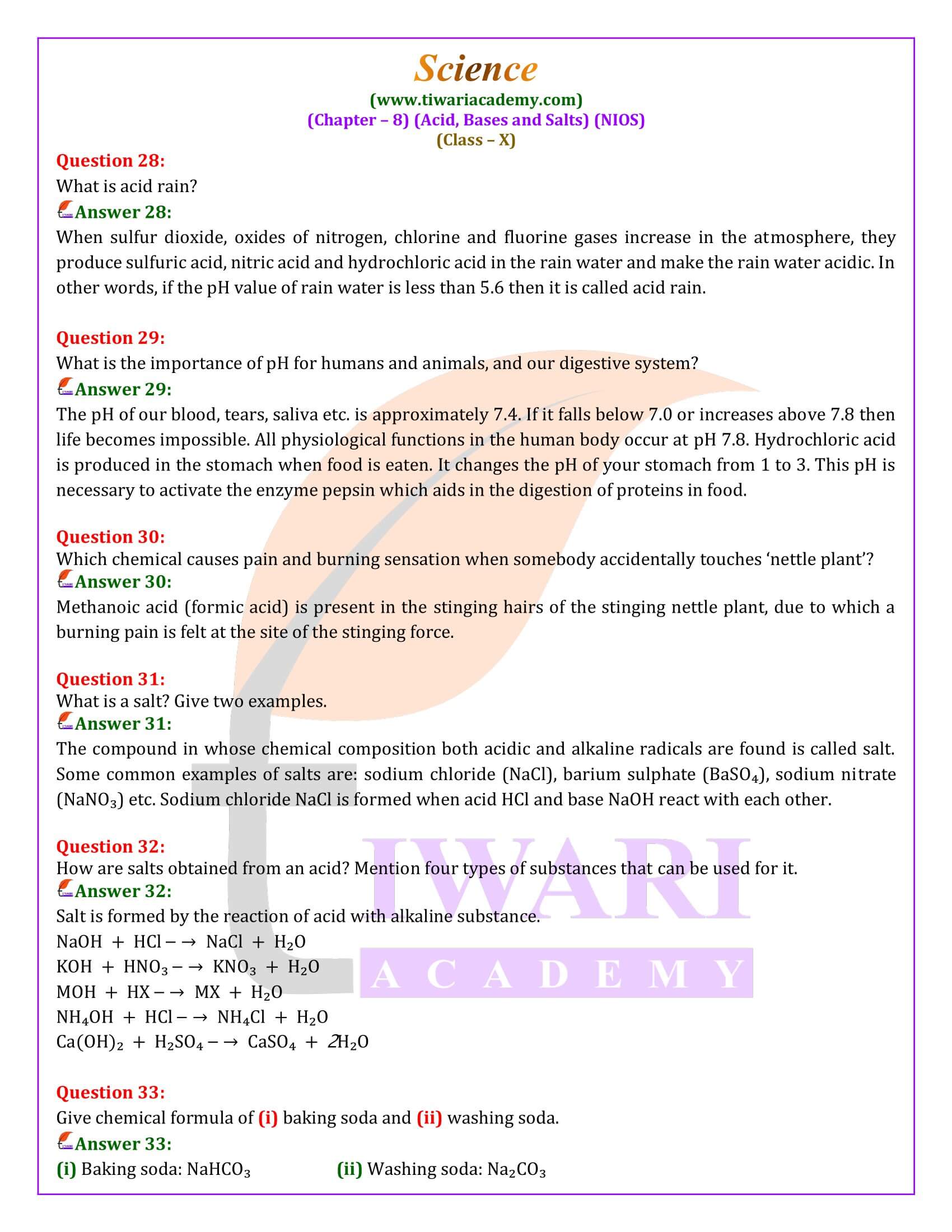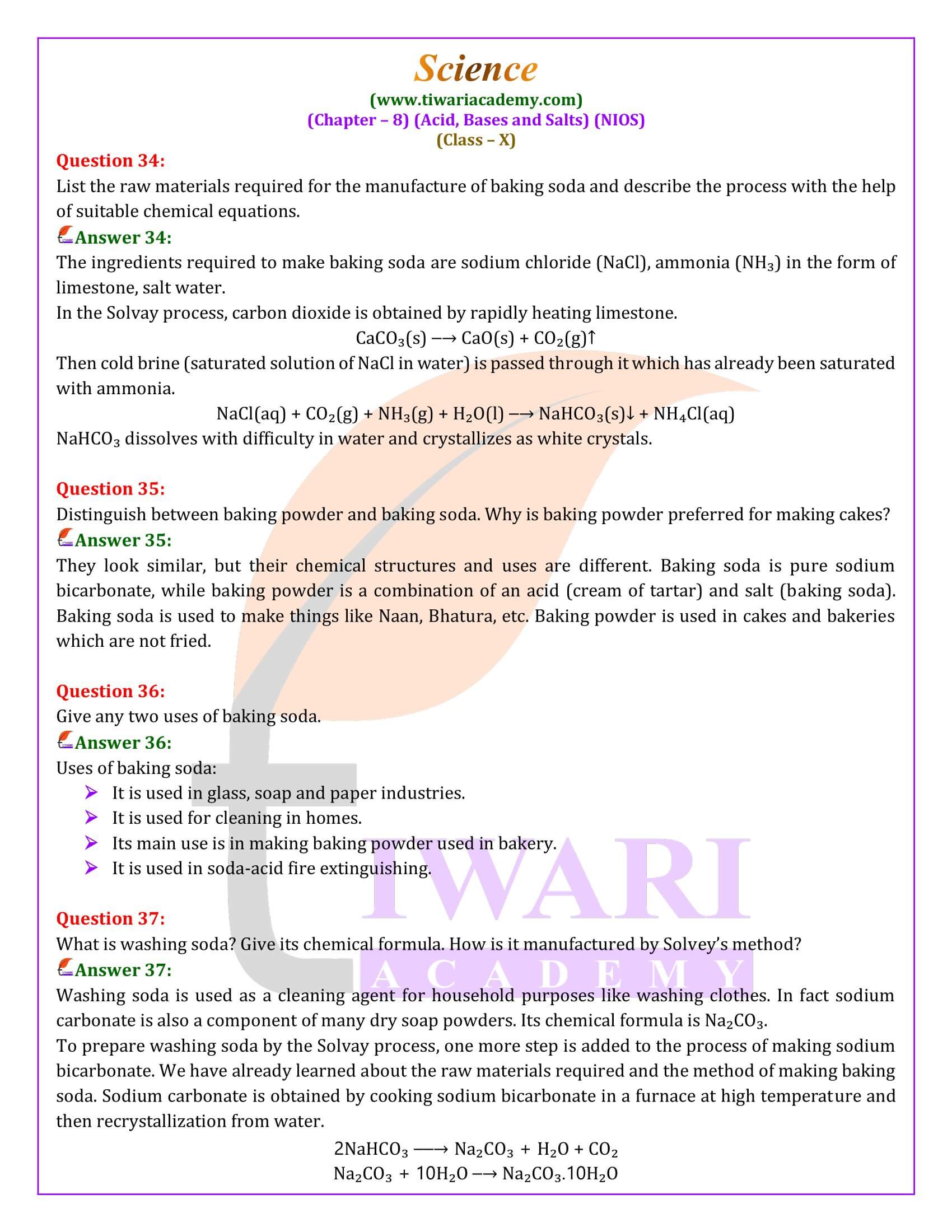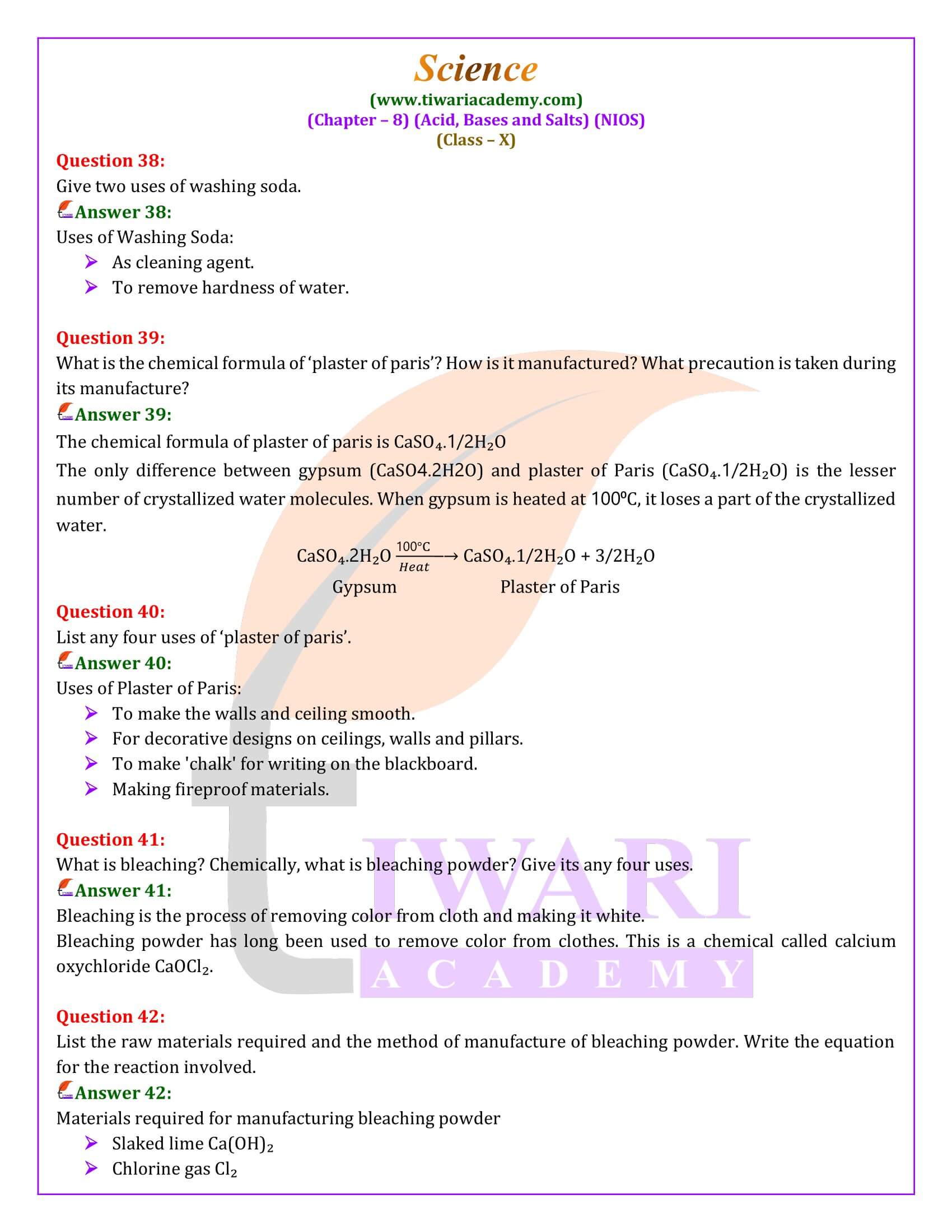NIOS Class 10 Science Chapter 8 Acids, Bases and Salts Solutions in Hindi and English Medium revised and updated for new session. Get here the complete description of National Institute of Open Schooling Science chapter 8 exercises.
Acids, Bases, and Salts Understanding the Basics
The NIOS Science chapter 8 describe the fundamental concepts of acids, bases, and salts, substances that are integral to our daily lives and various industrial processes. It explores the traditional uses of acidic substances like tamarind and lemon juice in enhancing the shine of copper vessels and the rationale behind not storing pickles in metal containers. These practices, rooted in ancestral wisdom, demonstrate an early understanding of the properties of these substances.
Acids and Bases: Definitions and Properties
Acids are substances that taste sour, are corrosive to metals, turn blue litmus red, and become less acidic when mixed with bases. Bases, on the other hand, taste bitter, feel slippery, change red litmus to blue, and become less basic when mixed with acids. The definitions provided by Robert Boyle in the 17th century laid the groundwork for our understanding of acids and bases, which was later expanded upon by Svante Arrhenius. Arrhenius introduced the concept of ion dissociation in water, explaining the acidic and basic properties based on the presence of hydrogen ions (H+) for acids and hydroxide ions (OH−) for bases.
Indicators: Tools for Identifying Acids and Bases
The NIOS Science chapter 8 describes the use of indicators such as litmus, phenolphthalein, and methyl orange to distinguish between acidic and basic solutions. These indicators change color in response to the pH of the solution, providing a visual method to identify the acidic or basic nature of a substance.
Reactions Involving Acids and Bases
Several reactions involving acids and bases are highlighted, including their reactions with metals, metal carbonates, and metal oxides, demonstrating their ability to produce salts and other substances. These reactions underscore the versatility and reactivity of acids and bases, making them valuable in various chemical processes.
Importance of Water in Dissociation
The role of water as a solvent in the dissociation of acids and bases is emphasized, showing how it facilitates the release of ions that are responsible for the conductive properties of the solutions. This section further explains the concept of self-dissociation of water, an essential process that contributes to the acidic and basic properties of solutions.
pH: A Measure of Acidity
A significant portion of the chapter is dedicated to the concept of pH, a scale used to measure the acidity or basicity of a solution. The importance of pH in everyday life is discussed, highlighting its relevance in biological systems, environmental science, and various industrial applications. The chapter explains how the pH scale ranges from 0 to 14, with 7 being neutral, values below 7 indicating acidity, and values above 7 indicating basicity.
Salts: Formation and Characteristics
The chapter 8 of concludes with a detailed examination of salts, products of reactions between acids and bases. It explains how salts are formed, their properties, and their significance in various domains, from household applications to large-scale industrial processes.
This comprehensive overview of acids, bases, and salts underscores their critical role in the natural world and human society. From culinary practices to advanced scientific research, these substances are integral to numerous processes and applications, reflecting the complexity and interconnectivity of chemical science.
